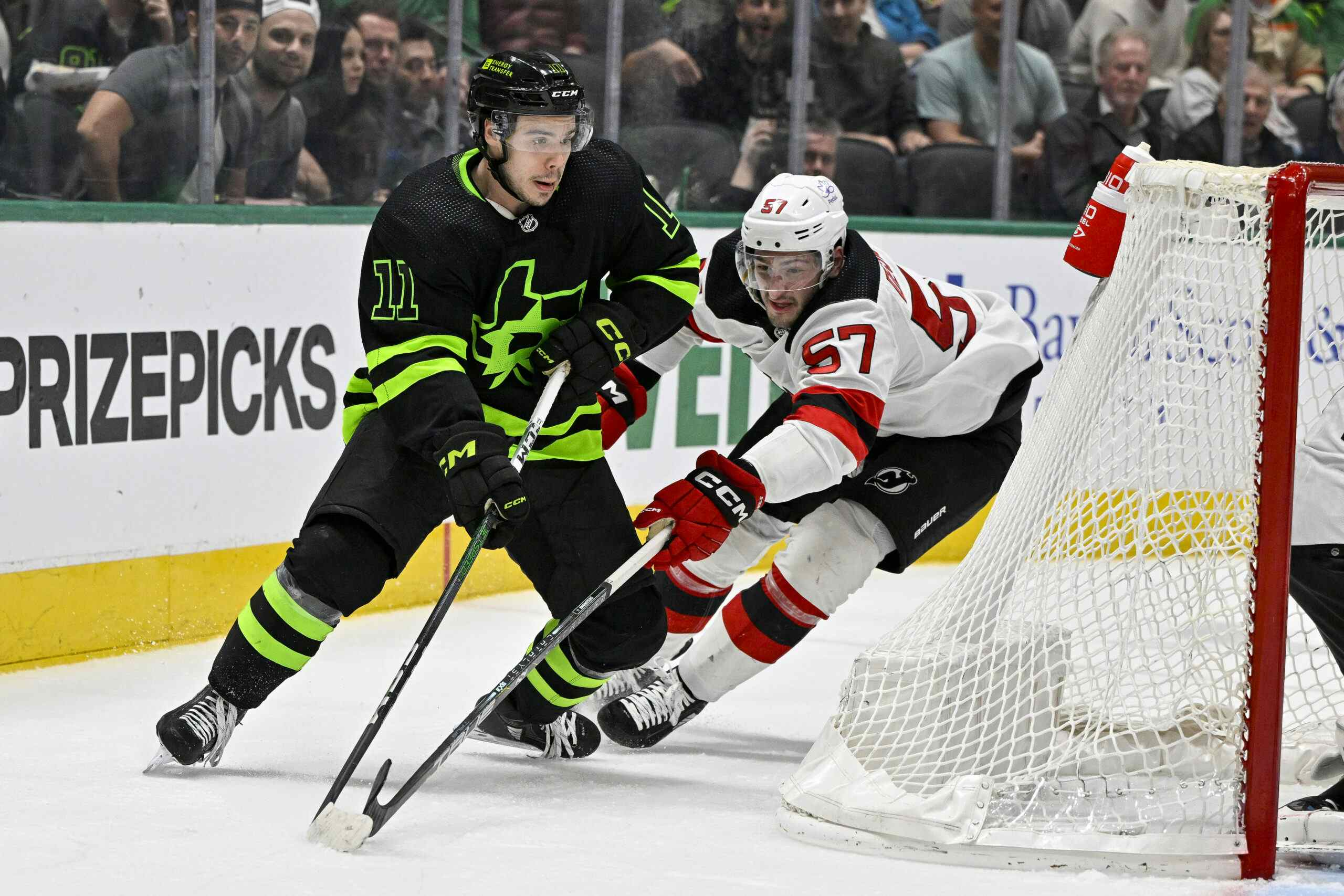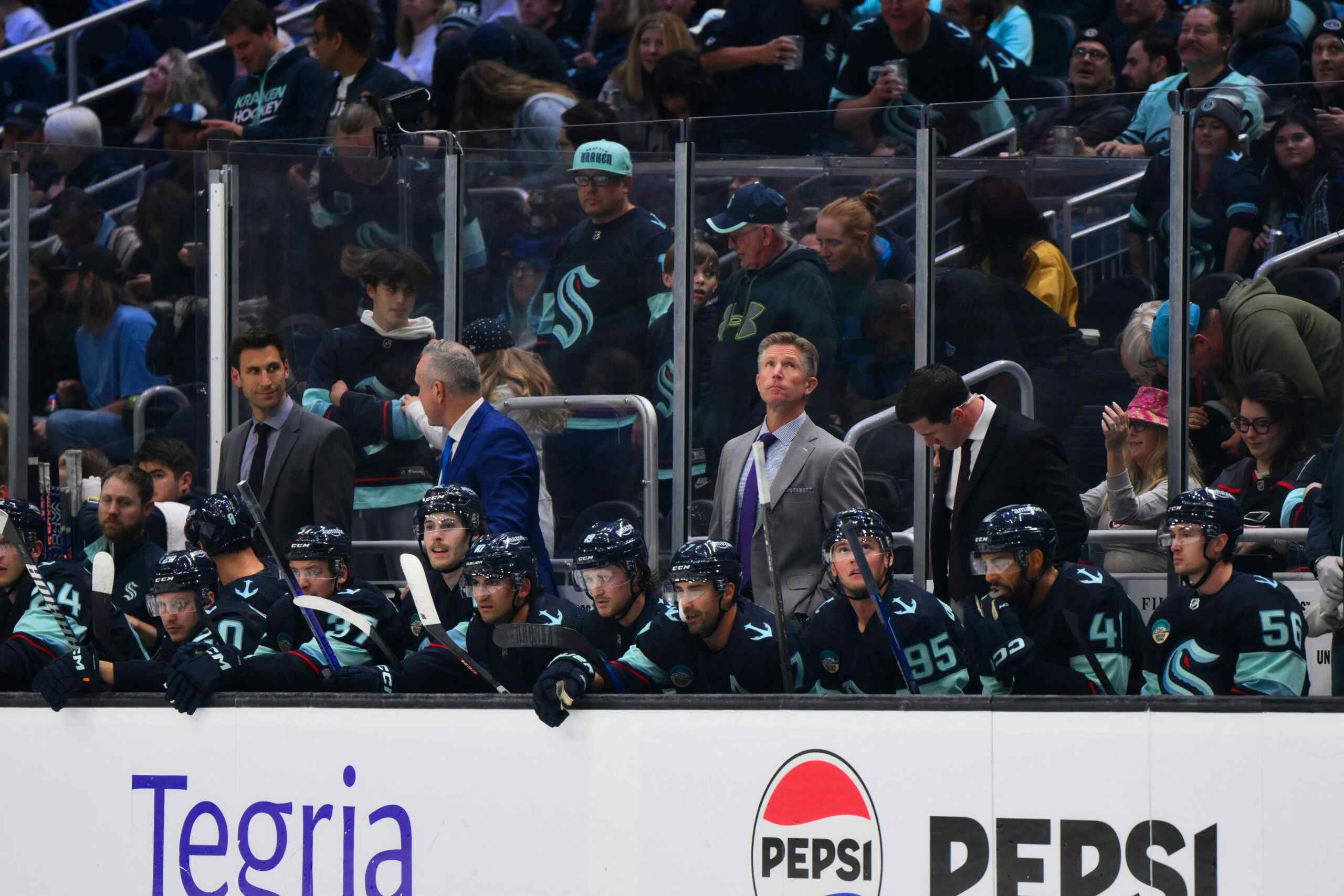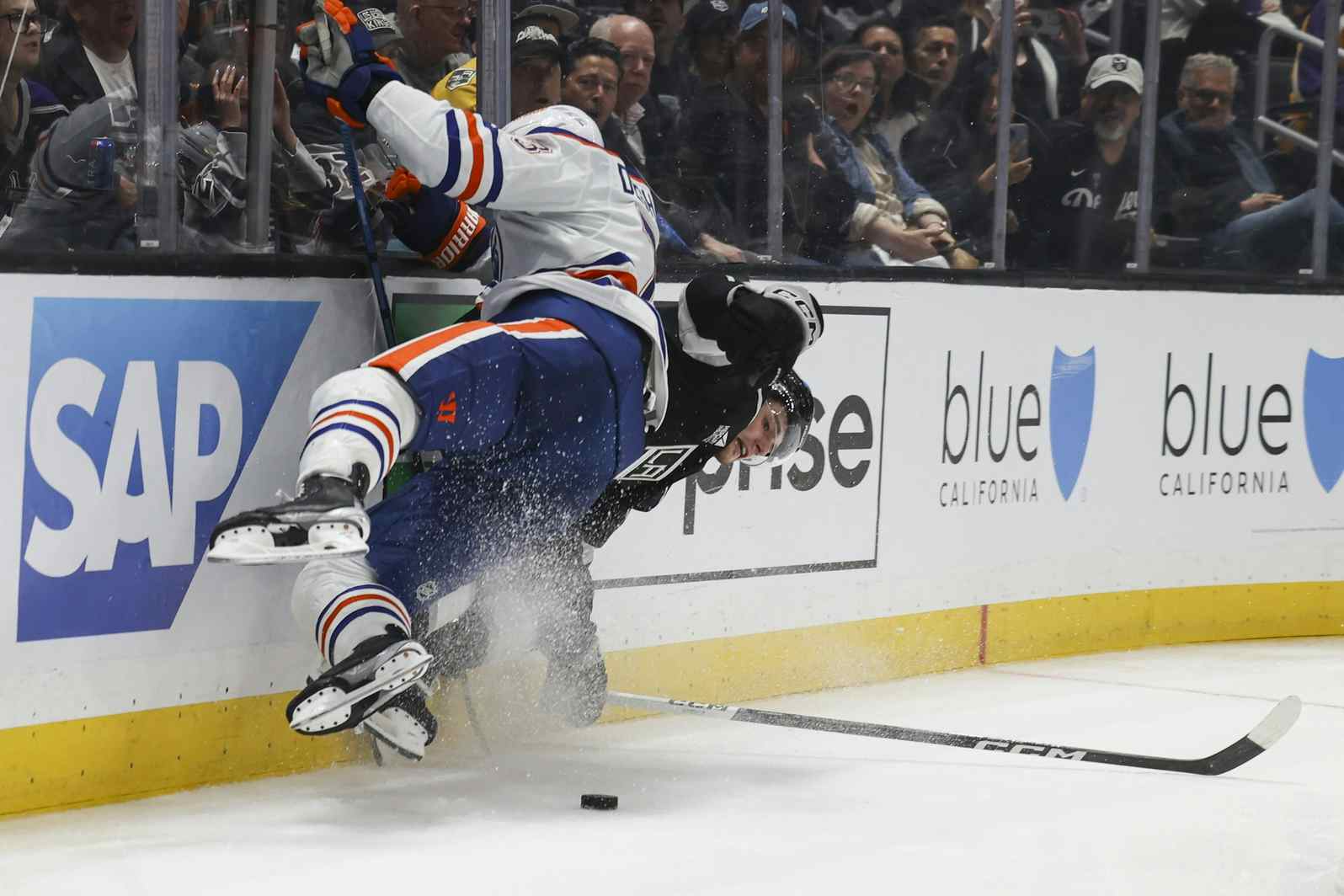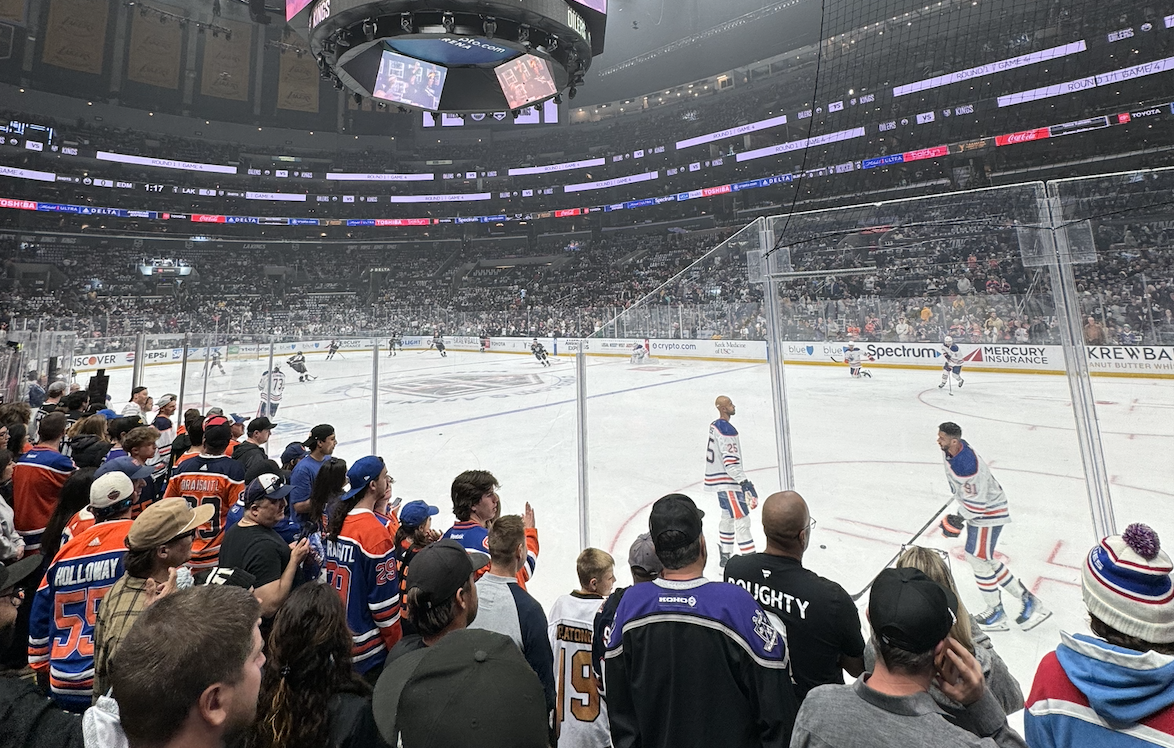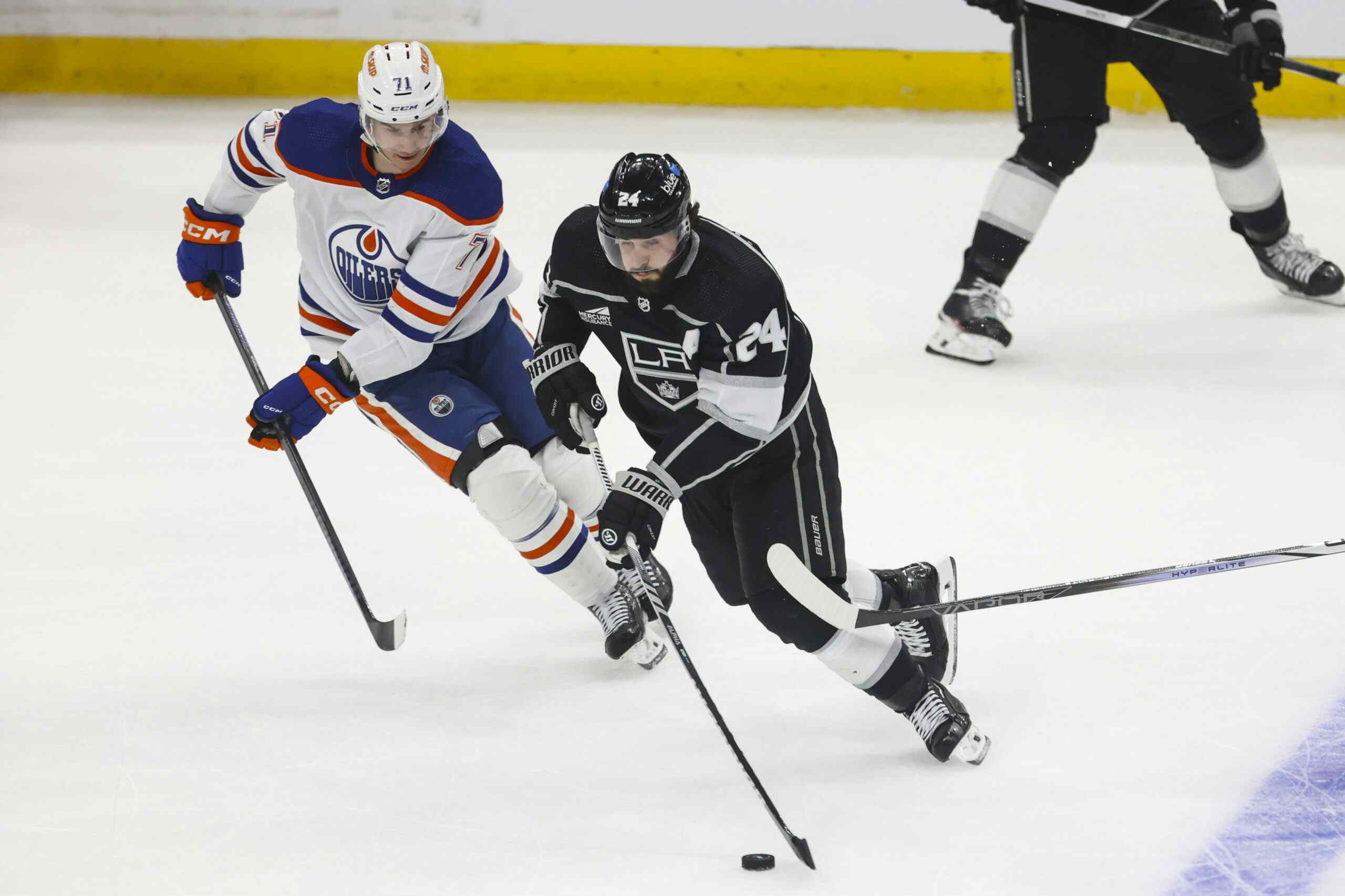Video Review, Goalie Equipment Changes, MacT and More
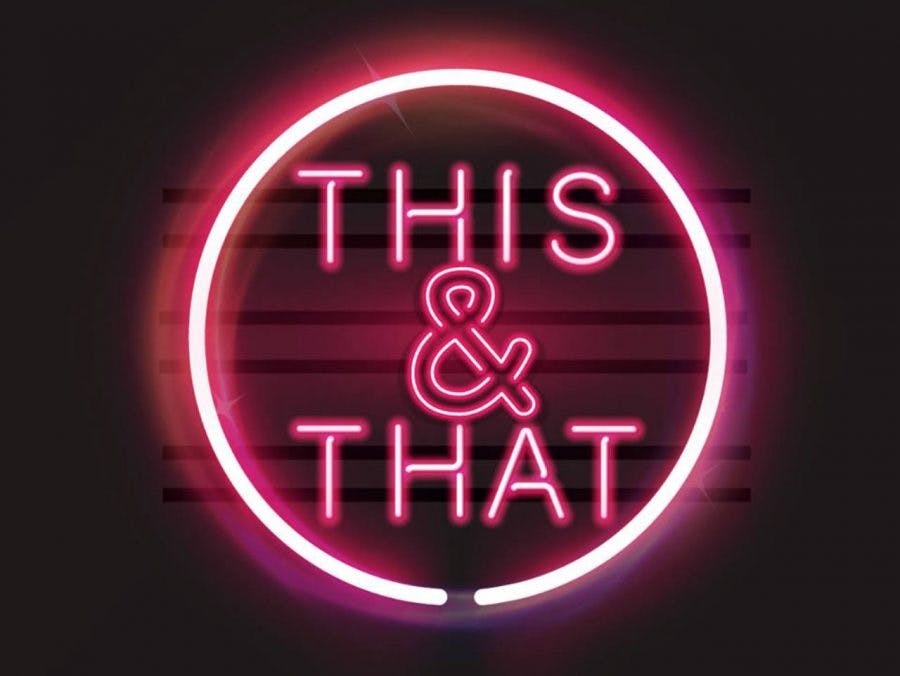
By Jason Gregor
4 years agoLast night’s missed hand pass led to Erik Karlsson’s overtime winner. It also led to many questions on what the NHL can do this off-season to ensure it doesn’t happen again.
Change will occur this summer, but what and how much?
Be careful what you ask for. Remember when a linesman missed Matt Duchene being offside by a foot. The NHL overreacted and instilled the most asinine video review to date, offside reviews. They are horrible. They only eliminate goals. They don’t review plays which are whistled down incorrectly and stop a scoring a chance.
The human eye is never going to see a skate blade off the ice by a millimetre in real time.
I hope the NHL doesn’t overreact again and encourage a major overhaul to review.
I’d be okay if they review goals, or plays leading directly to a goal. But I’m not in favour of reviewing an incorrect penalty, which occurred in round one for Vegas. As I wrote the day after, the incorrect call didn’t cost Vegas the game. It opened a door, but the Golden Knights’ inability to stop four goals on one powerplay was a bigger factor. They will review a major and then they start reviewing minors, in super slow motion, and we’ve likely got another review gong-show on our hands
Last night the missed call was the reason the Blues lost. We will never know if the call was made correctly who would have won, but no doubt the Sharks caught a major break.
Series Director, Kay Whitmore, when asked post-game if it was a hand pass, responded with, “It’s a non-reviewable play.”
I suspect the NHL will change the ruling this summer to make that a reviewable play. I see validity in that, but are we opening Pandora’s box even more? Last night was an obvious missed call, but how many aren’t obvious and no one complains?
We have seen how a millimetre offside or a skate barely off the ice, in super slow motion, can delete a goal. Will we see the same with gloved passes or other scenarios?
Also the league needs a competition committee that does not include anyone who actively works for an NHL team. They have a conflict of interest. Put in former officials, GMs, coaches and players. Just like the NFL does.
GOALIE IMPROVEMENTS…

The goalie union is always looking at ways to improve and limit goals. Kevin Woodley from In Goal Magazine is a goalie and he was on my show earlier this week and explained the testing CCM is now doing for goaltenders.
“From a shooter’s standpoint, look no further than Elias Pettersson. The Canucks had their internal skills competition and he gets close to 100 MPH and wins the hardest shot competition. I talked to him about that in terms of knowing the exact specs on his stick, where the torque and whip points are, all these things. Shooters are keenly aware of those things and now goalies are learning more about their equipment.
“I am in Montreal at CCM, and we got a look behind the curtain at their research and development department today, both sticks and goalie pads, and it’s kind of like an EA Sports set up where they have all the measuring points on it. But to see the science and the technology that goes behind measuring those things and all the different impact on it, it’s amazing.
“It has absolutely lent itself to goaltending. Rebound control is something where in the past you’d see a big rebound and you hear the announcer say ‘a big rebound is a bad rebound’ and that isn’t the case anymore. A big rebound is a good thing for a goaltender. We understand that the further it gets away from us, the more time we have to recover, whether it’s to our skates or laterally to a new position on our knees, before the next shot comes.
“Goalies understand if guys are standing five feet in front of the net and that rebound comes off our pad hotter, it means it’s going past the first wave of guys looking for a rebound much quicker, giving them less time to react. We’re talking about half a second difference — they have measured it — and those are the types of things they measure here.
“Not just me saying it, or goalies believing it, but actually measuring reaction time, coefficient of restitution, how hot a puck comes in and how hot it leaves. Just like a golf club, you hear about coefficient of restitution and core in terms of how much a ball can explode off the face of a golf club. They’re measuring that level of rebound control here in their research and development facilities.
“Also new materials that slide better. As much as the shots are coming harder than ever before no matter what size you are, the same thing holds true for goaltending. The equipment is moving faster, creating environments which are better for goaltenders, so that battle will continue to rage on, and it is interesting to see it here first hand in testing facilities that are maybe set up originally and more often for sticks and shooter technology, but increasingly also being used so goalies get better too,” said Woodley.
While the NHL is looking at ways to have the correct call, I wonder if they would ever consider limiting the advancement of technology.
If pads are “springier” and it makes it easier for a goalie to kick out a rebound, is that good for the game?
Is creating sticks which allow players to shoot harder, even though they aren’t gaining strength, better for the game?
OIL CHANGE…

Photo by: Bill Streicher-USA TODAY Sports
After seven years in three different roles within the Oilers management, Craig MacTavish is going back behind the bench. He signed a two-year deal to coach Lokomotiv in the KHL. MacTavish was the senior vice president of hockey operation in 2012/2013, then he was promoted to general manager for two seasons, and then back as senior vice president of hockey operation for the past four years.
His best decisions were drafting Leon Draisaitl and Darnell Nurse in 2013 and 2014. He also acquired David Perron for Magnus Paajarvi and a pick on July 10th, 2013. His handling of Devan Dubnyk wasn’t ideal. “If you have to ask the question,” was his response after the 2012/2013 season if Dubnyk was a starting goalie. It shattered Dubnyk’s confidence, and he never regained his form. He was coming off a season with a .920sv%. Yes, he allowed some bad goals, but many nights he was excellent behind a porous defence.
I felt MacT was a better coach than a manager. His teams were always competitive, and since he stepped away as HC of the Oilers, they have only had one winning season. They made the playoffs in three of his eight seasons, and only once did his team have fewer than 85 points. In the ten years since the Oilers have had more than 79 points only ONCE.
MacTavish got the most out of his players between 2001-2009. At least those teams were competitive, and he wasn’t blessed with an abundance of talent. Many players had career bests under MacTavish: Shawn Horcoff, Ales Hemsky, Jarret Stoll, Raffi Torres, Sam Gagner, David Perron (at the time) and more.
When he had an elite player, Chris Pronger, his team went on a great playoff run in 2006.
It was time for a change for him and the organization, and I’m happy for him he is going back to coaching. The KHL can be ruthless to coaches at times, so I wish him luck.
PARTING SHOTS…

Oilers prospect Dmitri Samorukov and his Guelph teammates play Saturday at 1:30 p.m, Sunday and Tuesday at 5 p.m., if you are inclined to watch. He has had a stellar playoffs with 28 points in 24 games, while playing huge minutes on the backend. He’s another great example of why the vast majority of players need more time to develop.
He was drafted in the third round in 2017. Contrast that to Prince Albert Raiders forward Brett Leason. He wasn’t drafted in 2017 or 2018. He is now 19 years of age and projected to be a first round pick. It is amazing how people’s perception of players change based on where they were picked. Leason wasn’t ready at 17 or 18, but now in his 19-year-old year he had a breakout campaign with 36 goals and 89 points in 55 games and another 25 points in 22 playoff games.
He had 33 points in 66 games last season and 18 points in 68 games two seasons ago; when he was draft eligible for the first time. He wasn’t on anyone’s radar. Two years later he will likely go in the first round, and be looked at as a legit prospect.
He is an outlier, no doubt, but it illustrates the point that players can change a lot in two seasons, and some players won’t improve much after their draft year, while others make huge gains.
Where a player is drafted shouldn’t matter much two or three years later, but it still does in the eyes of management, media and fans.
Recently by Jason Gregor:
Recent articles from Jason Gregor

